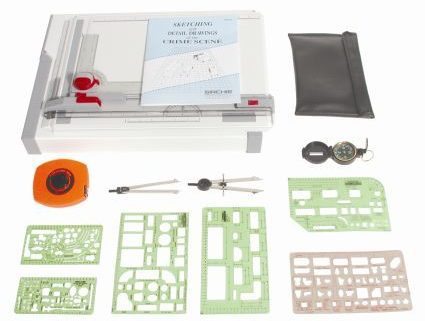Composite Sketches
Compostite sketch of Chicago strip mall shooter.
Composite sketching has been around for longer than most people think. The first drawing system for the purpose of criminal identification was devised in 1896. In 1910, a drawing was used to capture Dr. Hawley Harvey Crippen for the murder of his wife.
I remember the days when the Identi-KIT was a wooden box filled with clear, poly sheets that could be overlayed to create an image of a person’s face. The sheets were simply pictures of face shapes, noses, ears, eyes, hair styles of various shades, and lips.
Detectives sat in a room with a witness, and together they painstakingly picked out face parts that best resembled the suspect’s features until they had a final image of the crook’s face. The images weren’t always the best in the world, but it gave us something to work with. Sometimes we were lucky and came up with a real dead-on ringer.
Chicago police captured serial killer Richard Speck using an early Identi-Kit sketch kit.
Forensic artists were also employed to draw sketches, freehand, based on witness descriptions.
Then, finally, Identi-KIT and a few other companies developed software that can provide an image of a suspect’s face in mere seconds based on a few basic interview questions. With this software, investigators have the ability to fine-tune details such as eye and face shapes.
Some investigators still prefer to employ a forensic artist to draw the composite. I’d be curious to hear what Forensic Artist Robin Burcell has to say about this one. Are you out there, Robin?
* Thanks to Identi-KIT and Tru TV






Before my department sent me to the FBI Academy to learn sketching/forensic art, I trained under San Jose’s Tom Macris, who was at the time (mid-eighties), one of the best known artist in California, if not several other states. He was in on the ground floor, helping to develop the software for the composite sketch computer program. I’m sure others have followed, but at the time, it was cutting edge.
However, identiKits were something we called Mr. Potato Head kits. Every now and then, someone got one that looked right, but mostly they were pretty bad. I went to the class, and the instructor bragged how he put together a sketch of the Midnight Stalker (or whoever that Ramirez guy was down in L.A., who was killing people back then) based on a physical description from a newspaper article, and it looked just like the guy. That was his selling tool. It’s so good, anyone can do it, based on someone’s physical description, even if the witness isn’t even there!
My feeling is that nothing replaces the sketch artist. Identi-kits are limited, and the computer sketch programs are better, but still have limitations. Also they are too photographic, if that makes sense. When someone is looking at a sketch, they tend to forgive the imperfections.
And, of course, anyone who is interested in any further info, can certainly check out my latest book, FACE OF A KILLER, about an FBI forensic artist, wouldn’t you know. A bit more detail there, all wrapped up in a fictional murder to make it fun.
Years ago, my dad was one of several artists who volunteered to be on call to do composite sketches. He was really good at it because besides being an excellent artist, he enjoyed people and could get almost anyone chatting. Plus he was a night person, so would happily take calls during the night.
We had one of those software programs for awhile to try out. The guys had fun making sketches of each other. They weren’t always complimentary, either!